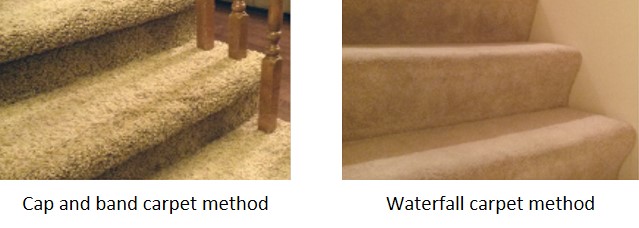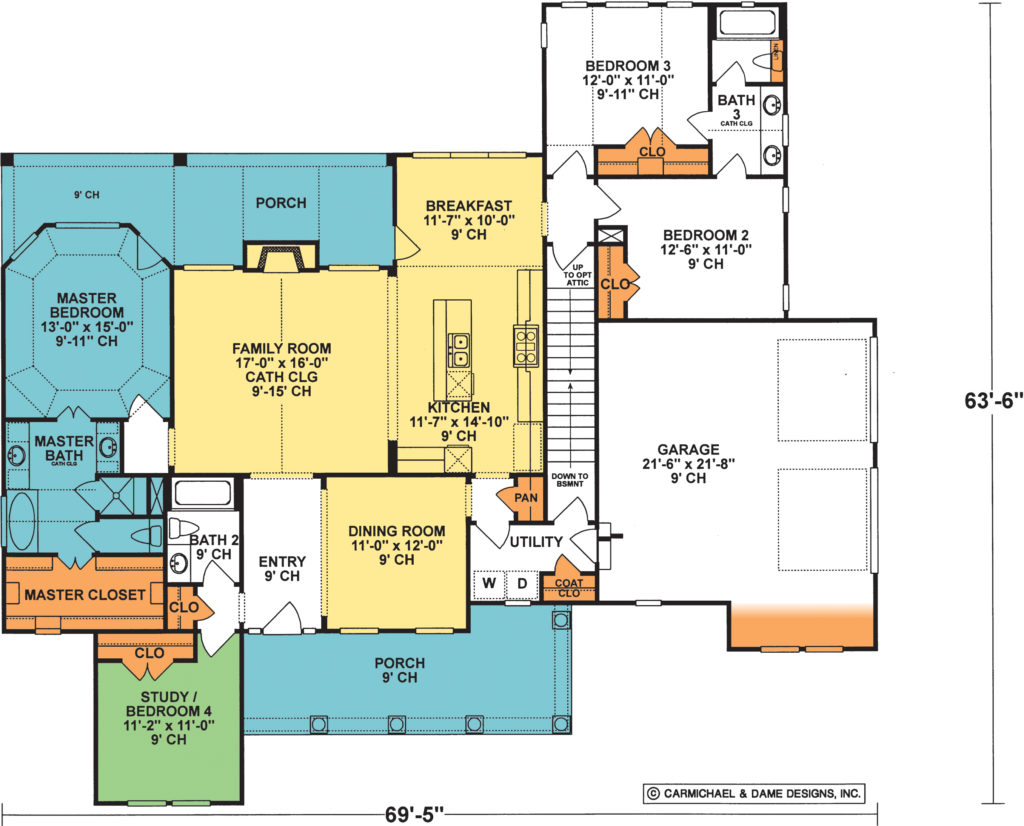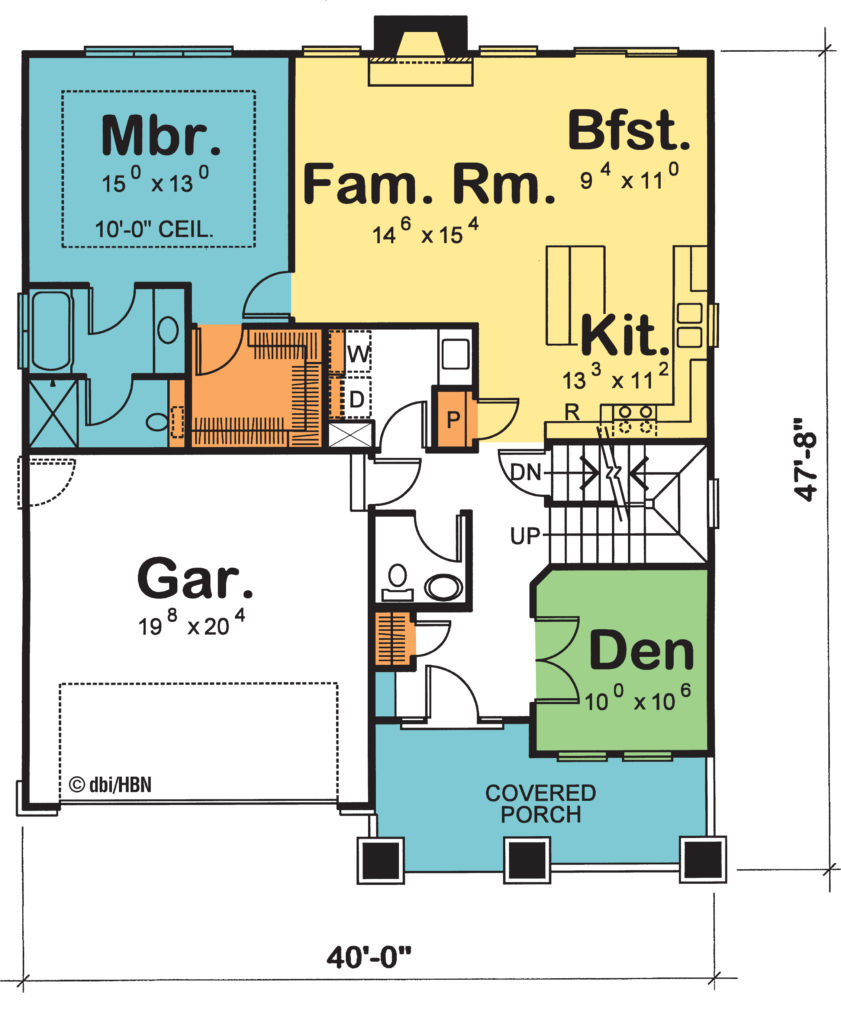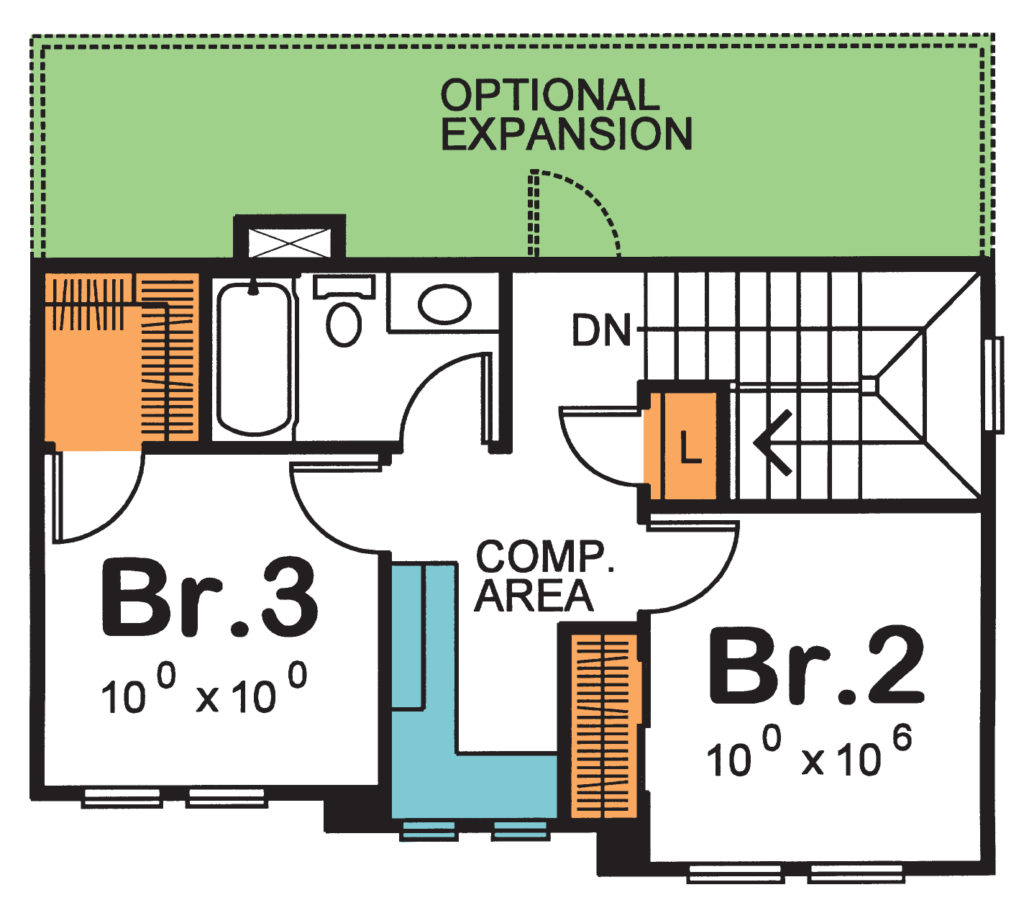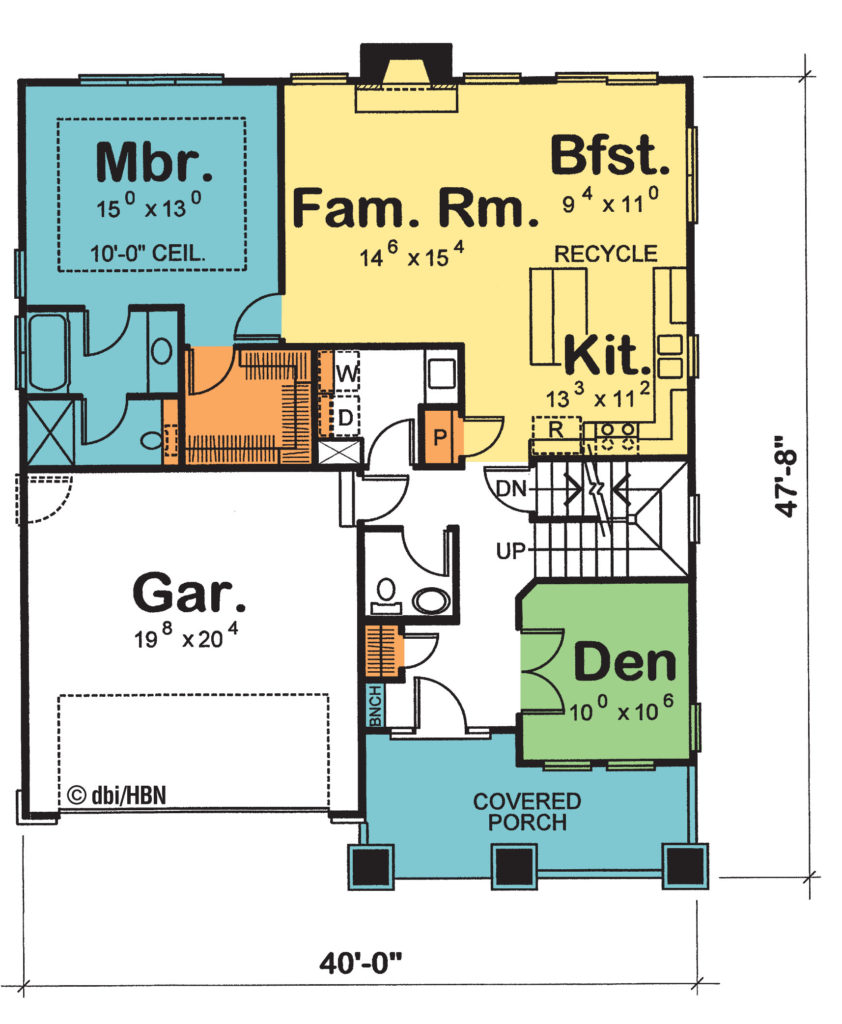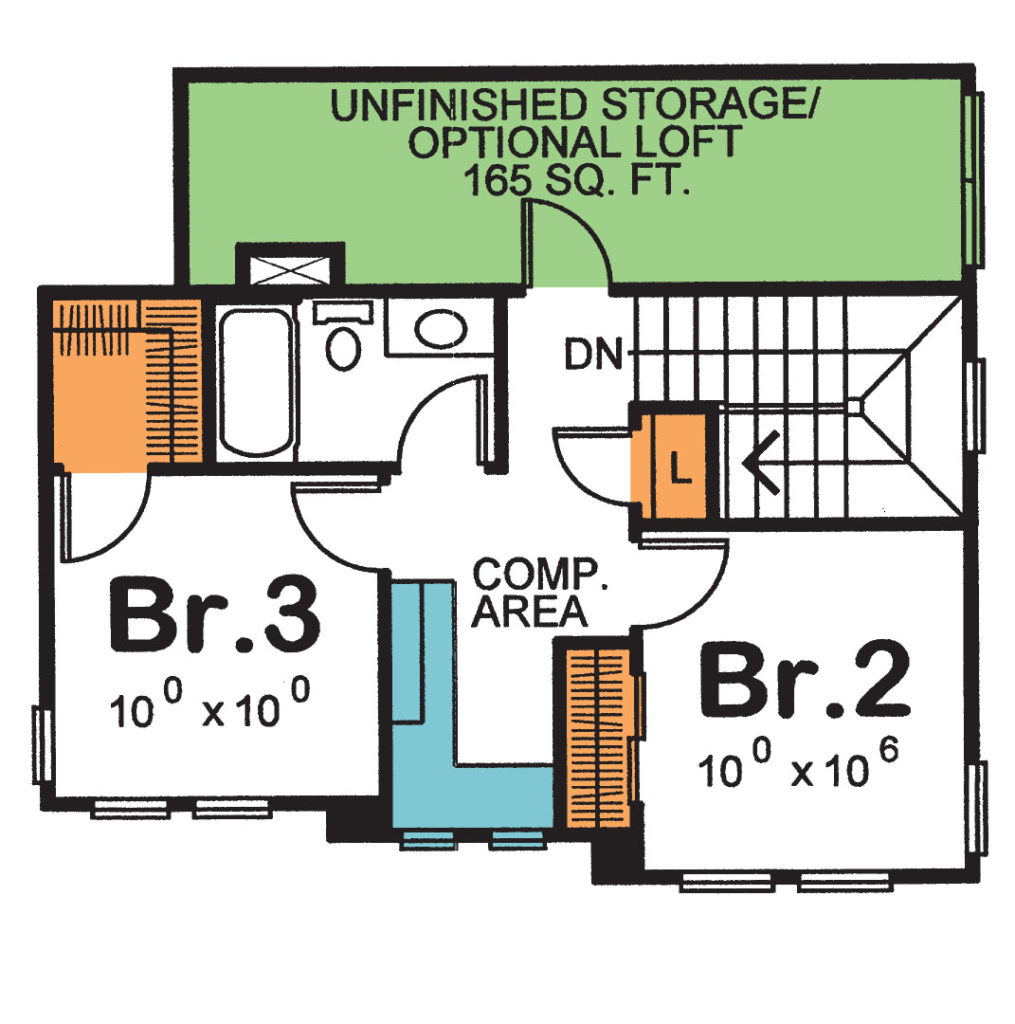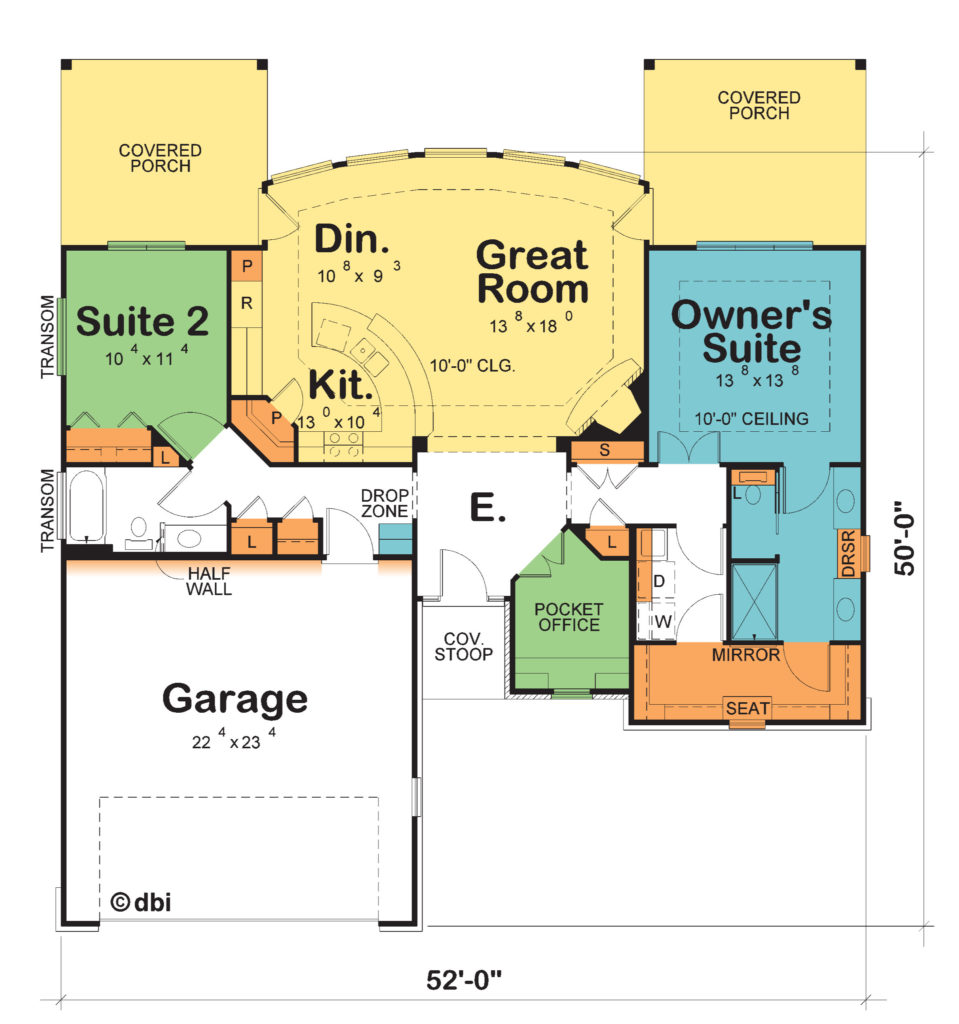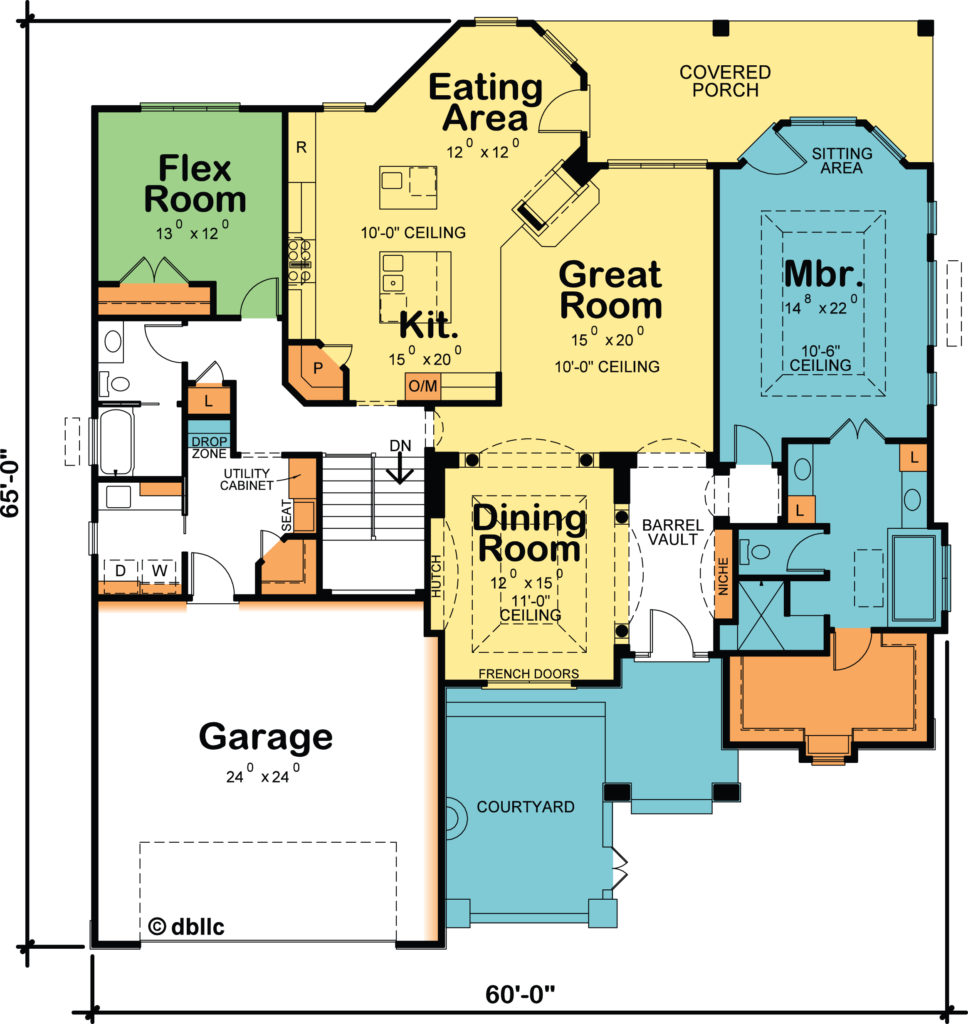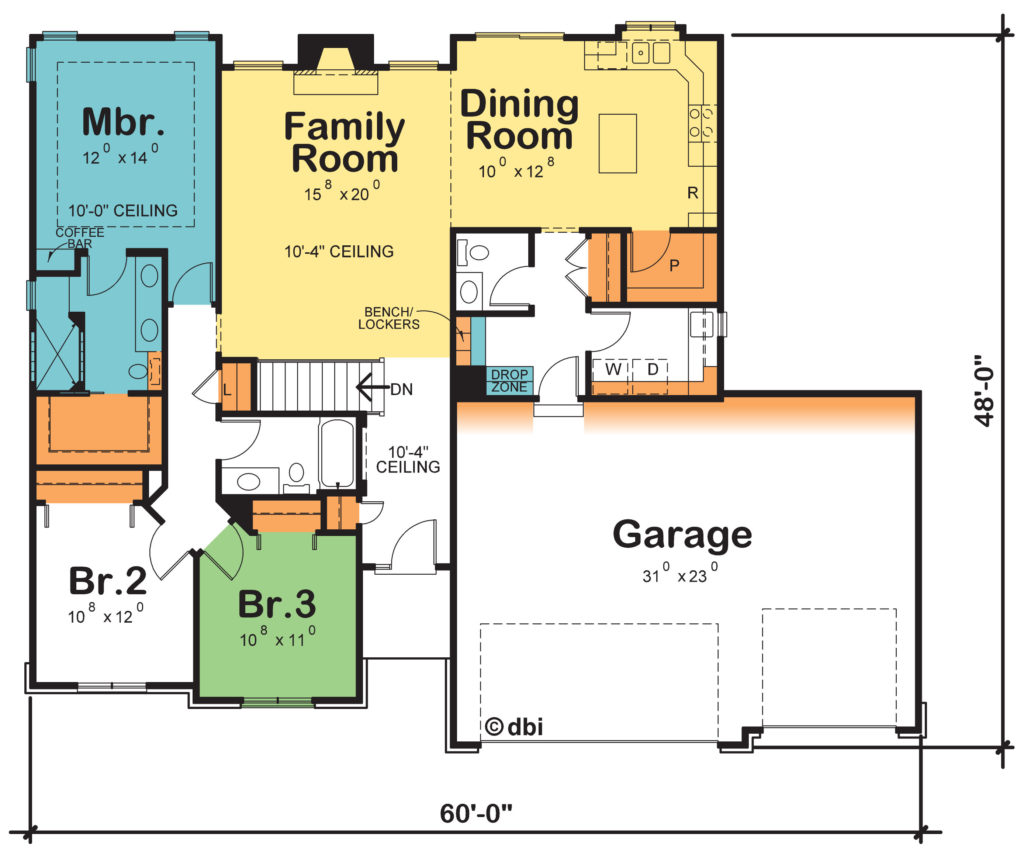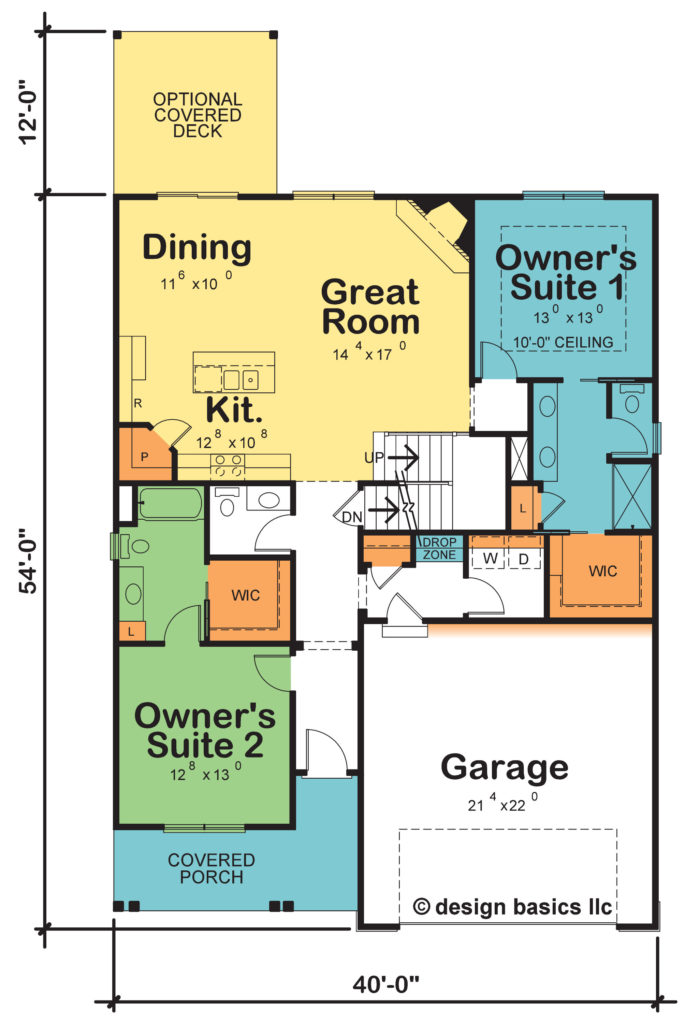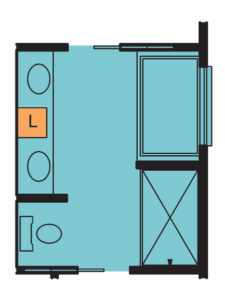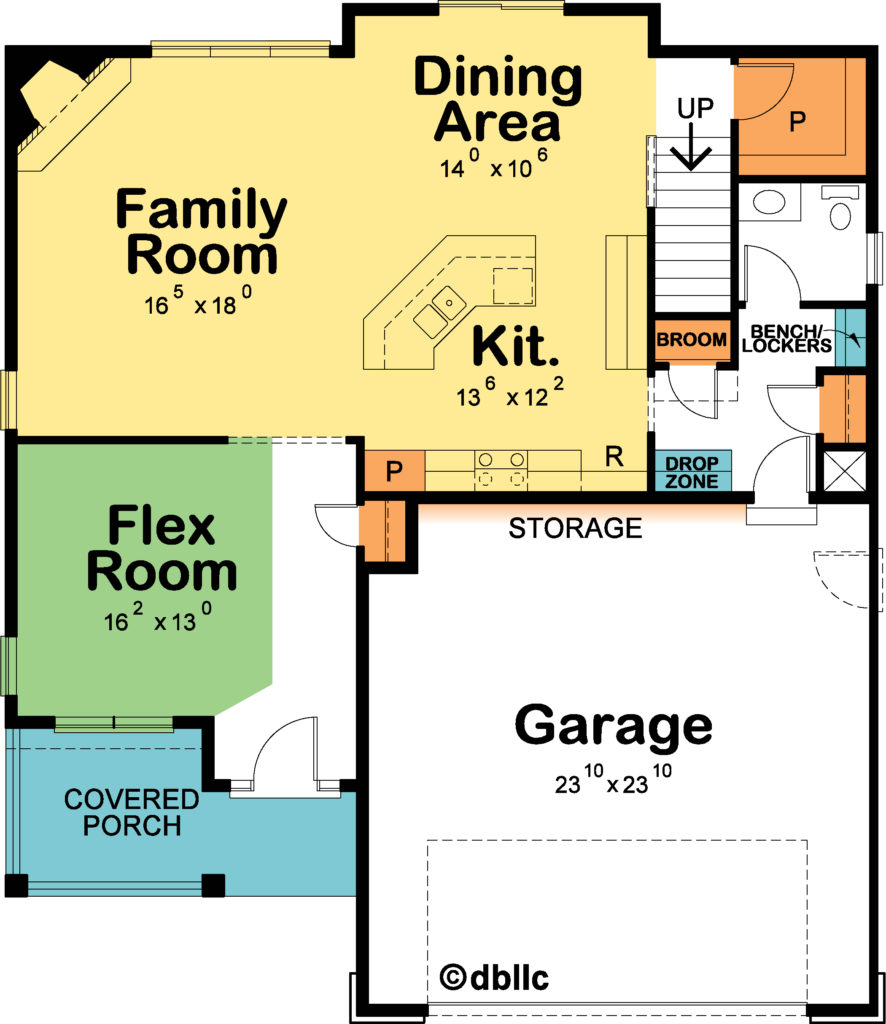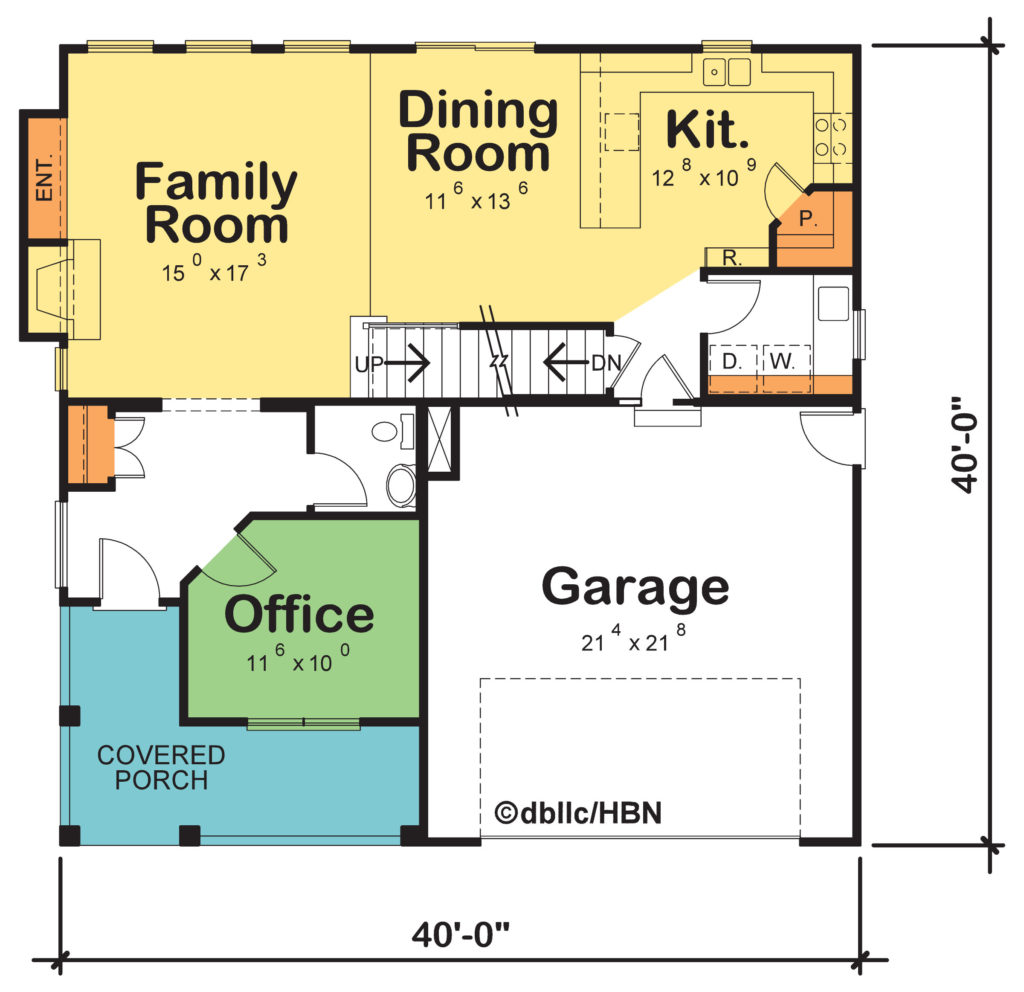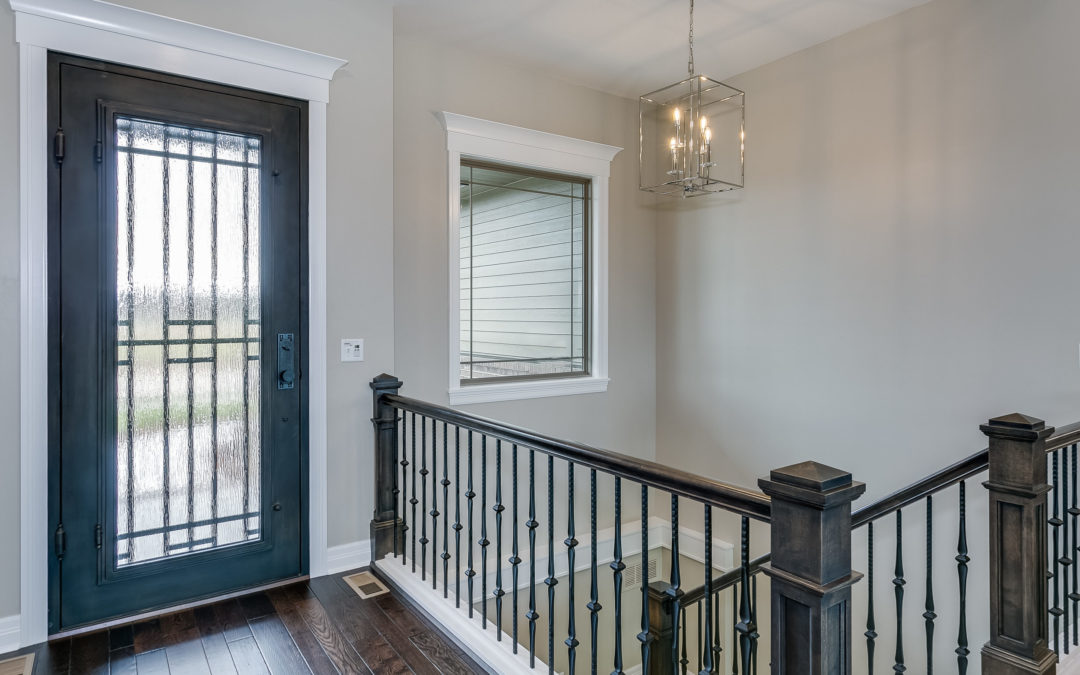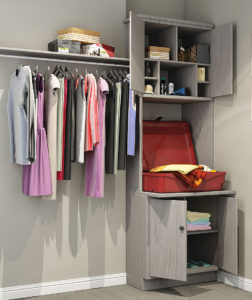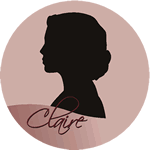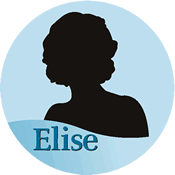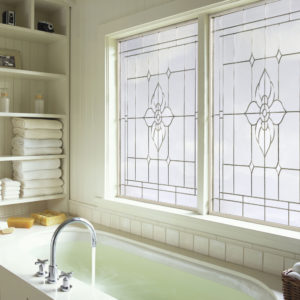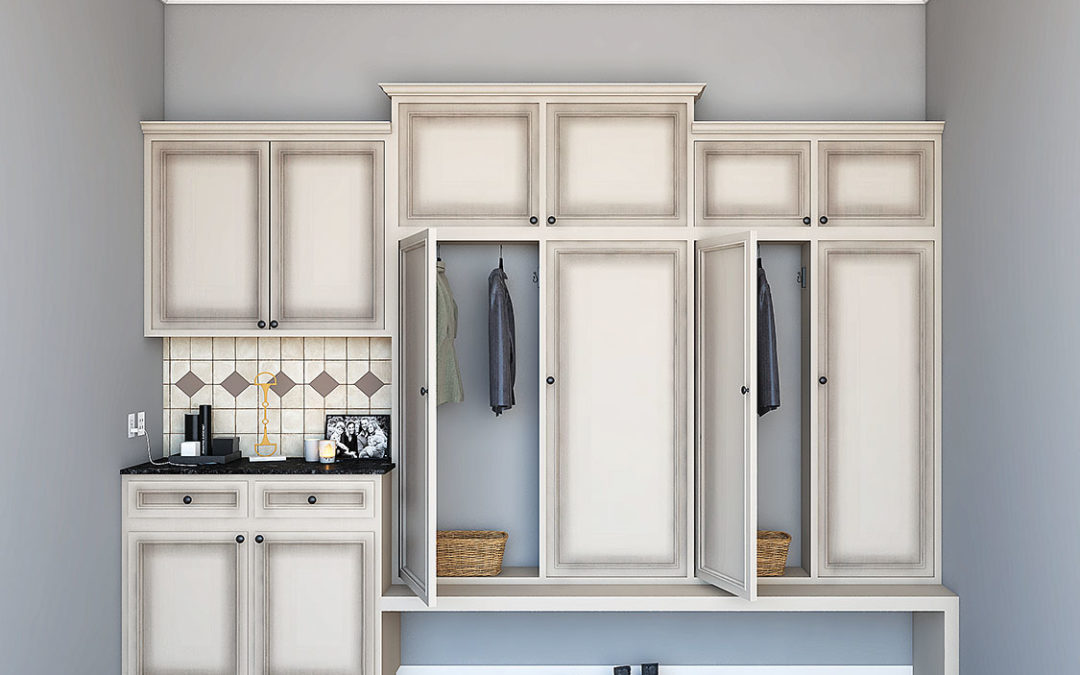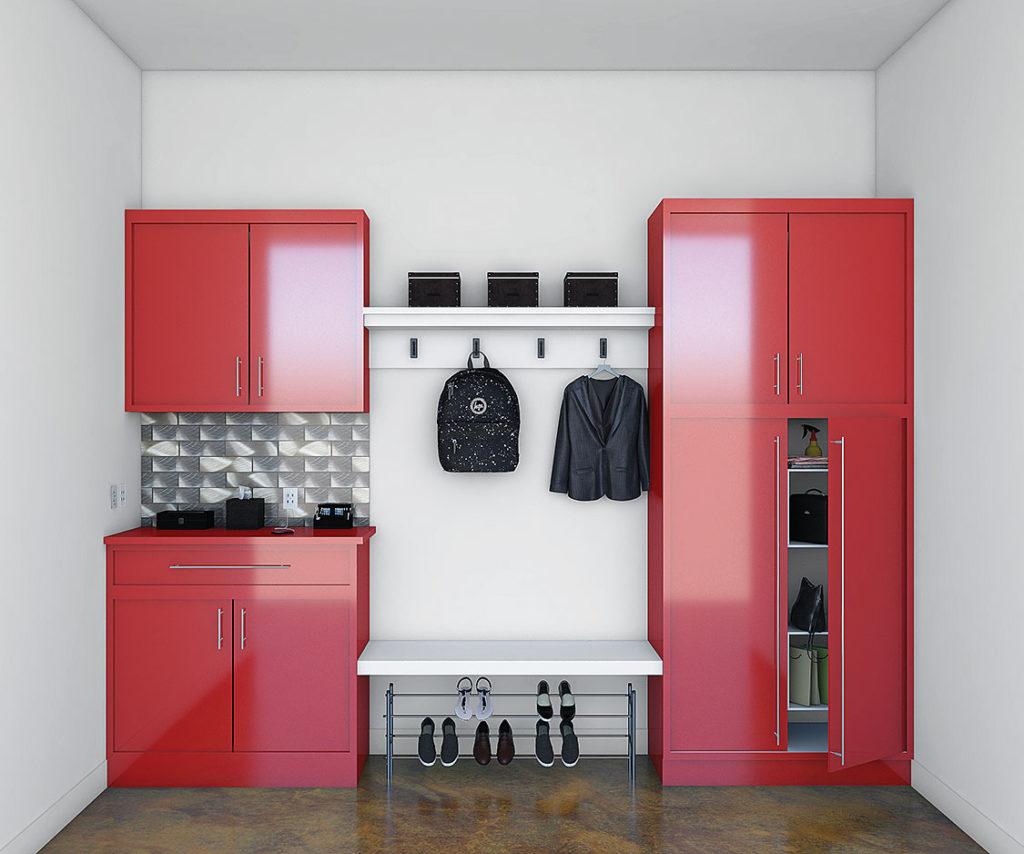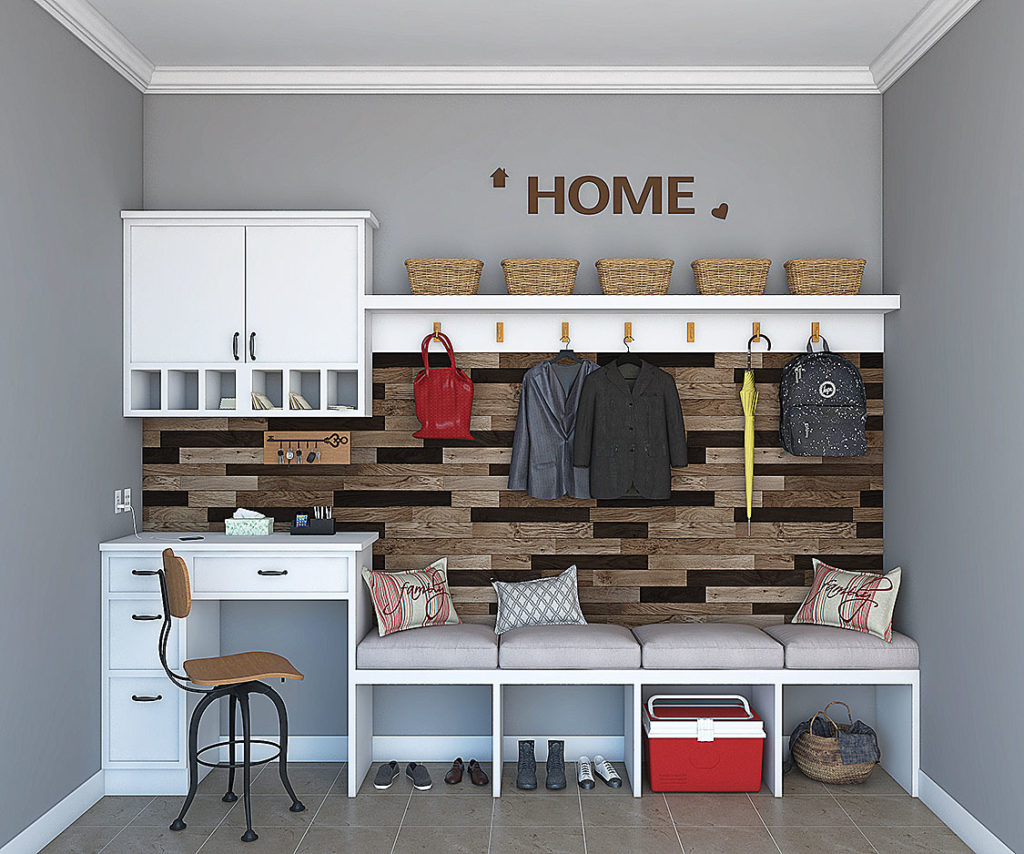
Design Affects Cost – Value Engineering
Surging lumber prices have added an estimated $14,000 to the typical new home in just the last four months according to the National Association of Home Builders. While builders can do little about fluctuating materials costs, value-engineering the home – balancing livability and style with functional aspects and cost – helps with affordability. Yet many aspects of value engineering aren’t obvious or readily recognized. For example, roofing contractors typically charge more for more complex or steeper roofs.
The one-story Calverton (plan #8530), at right, was designed with 8:12 roof pitches, primarily for aesthetics. Reducing the roof pitch to 6:12 would likely reduce the cost of the home, but also make it appear smaller.
The Cedar Hill (plan #42435) has a straightforward foundation. It also takes advantage of cost savings afforded by using readily available, standard building materials. For example, all windows (except transoms) are the same size. Joining two windows together, as in the front Suite 2 and Bedroom 3 saves money by only cutting and trimming around one opening in the wall. (The windows were split in Suite 1 to provide a second bed headboard wall option.) All interior passage doors are 32” wide (except for the double doors into Suite 2). Though the Great Room will probably continue with the same flooring as the kitchen and eating area, if carpet were chosen, a single 15-foot wide roll would eliminate seaming labor and cut-off waste.
Look for our next blog post series as we explore other topics that affect your cost of home ownership!
- View other articles on our blog
- Browse our Her Home™ Magazine
- Thoughtful Design Concepts
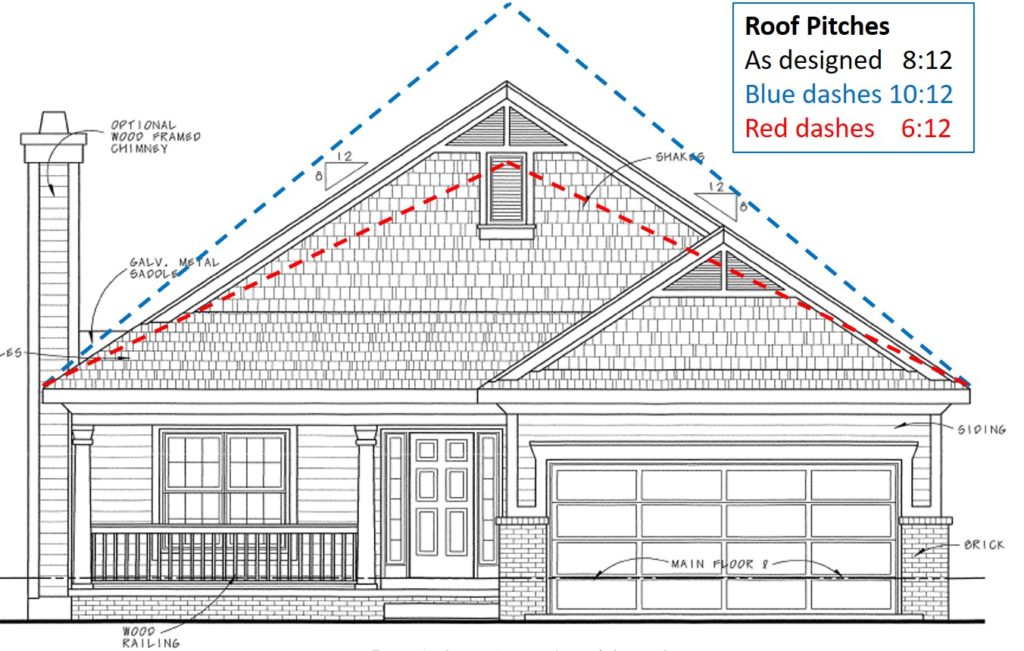
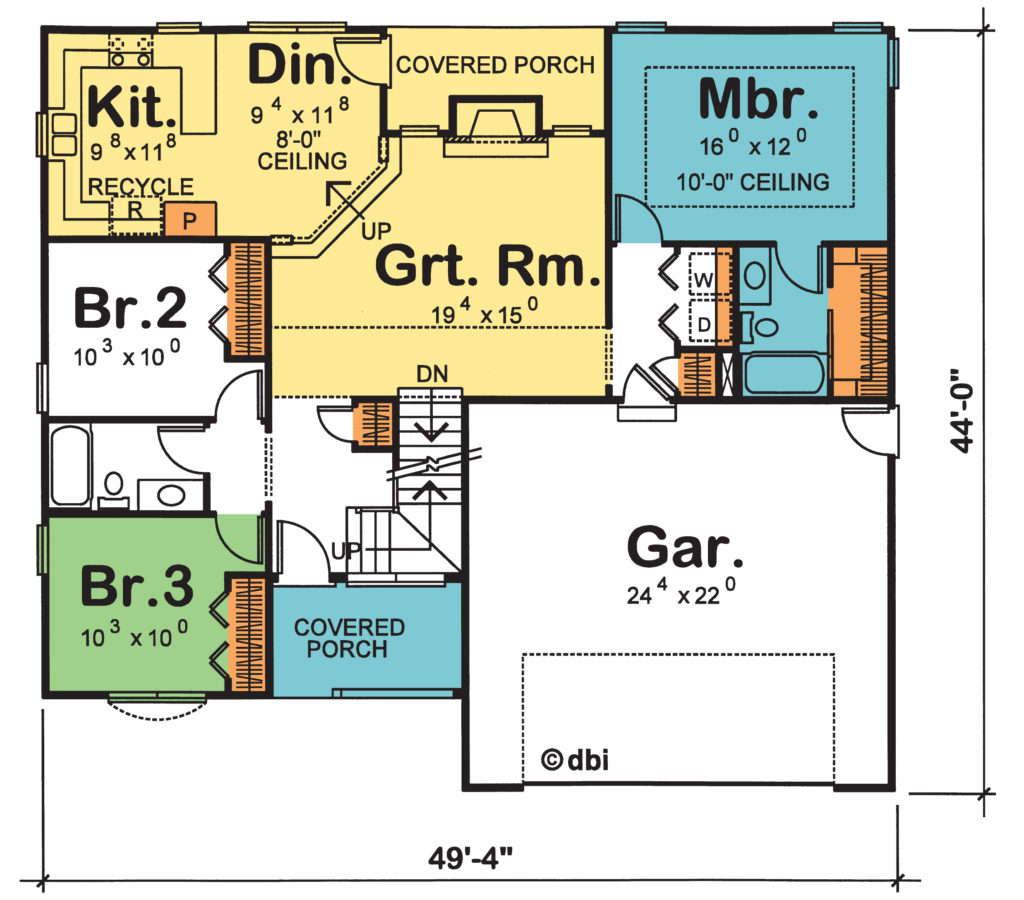
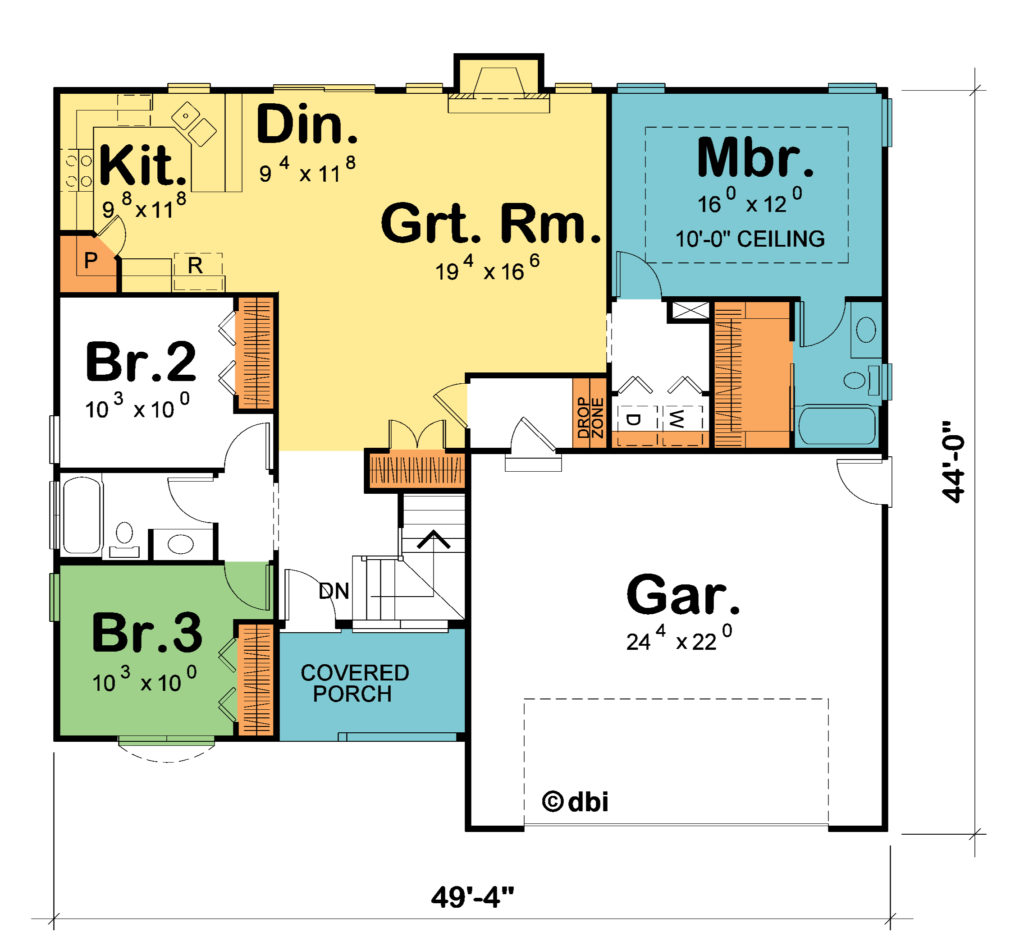
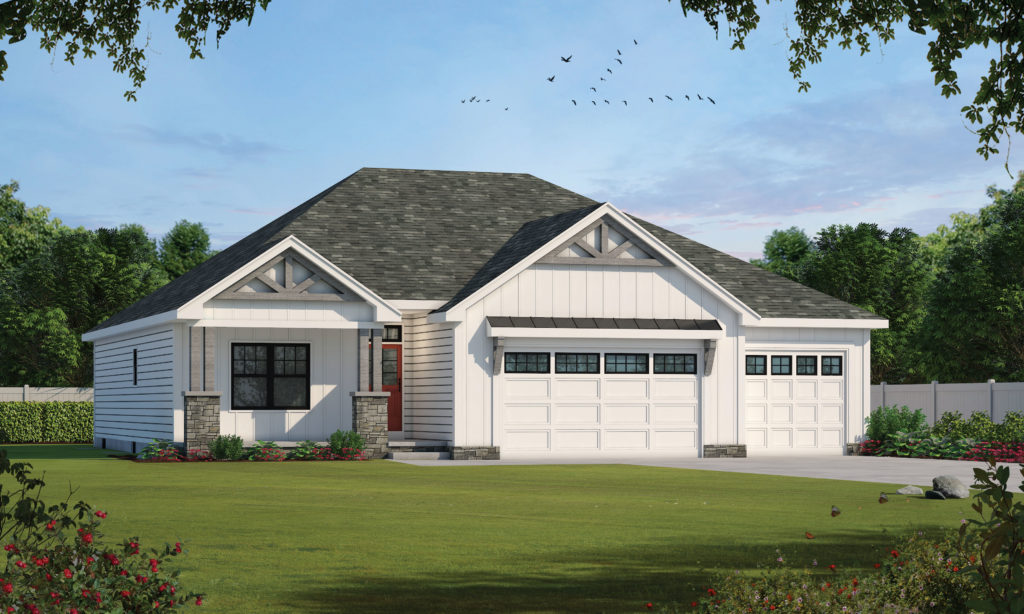
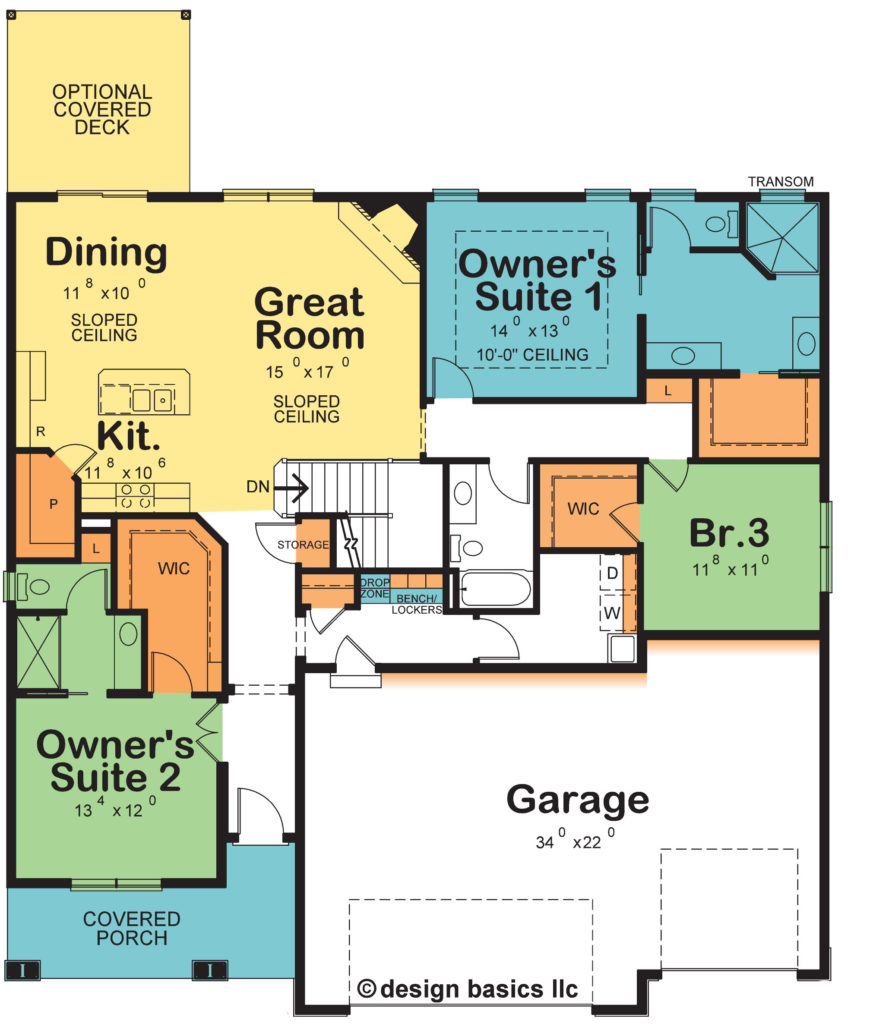
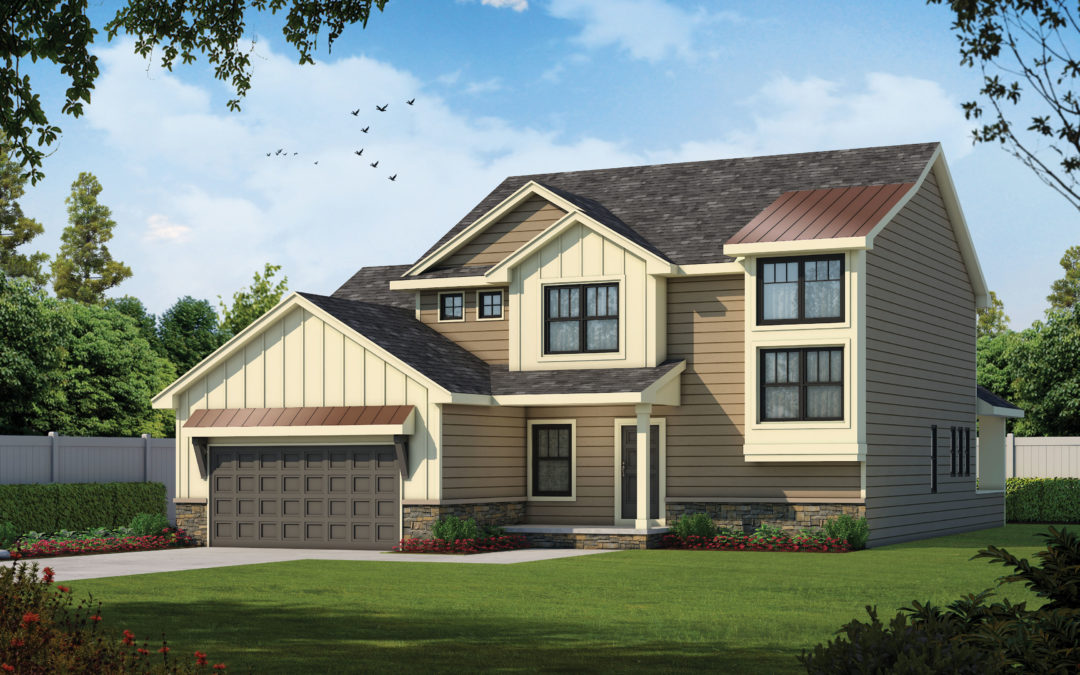
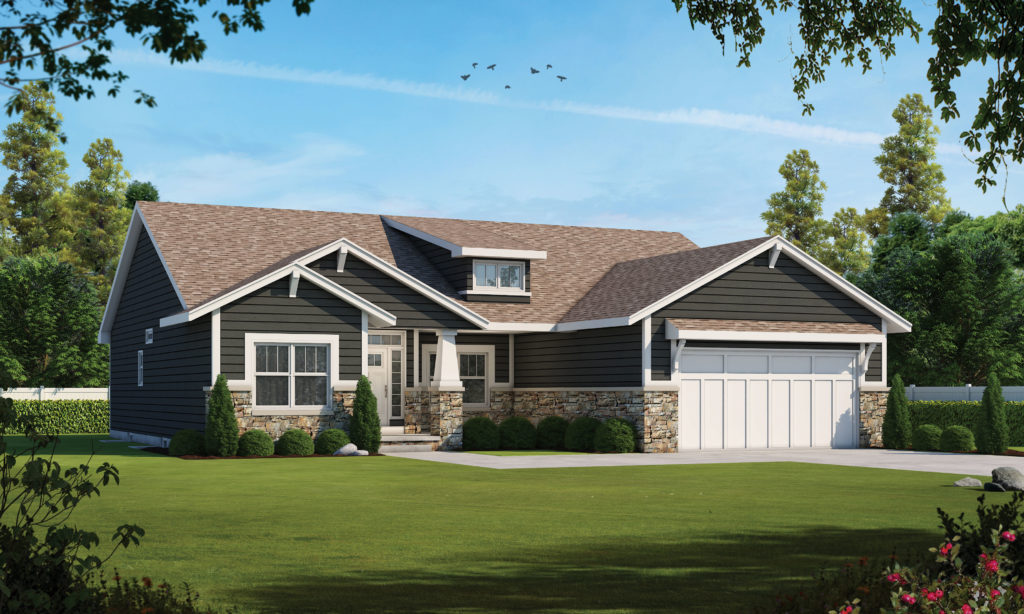
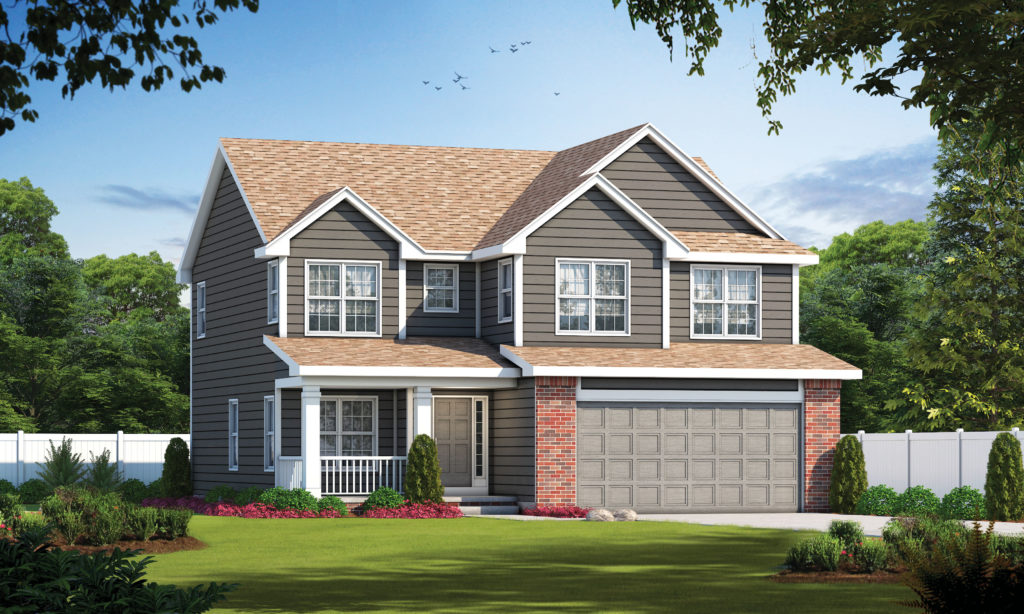

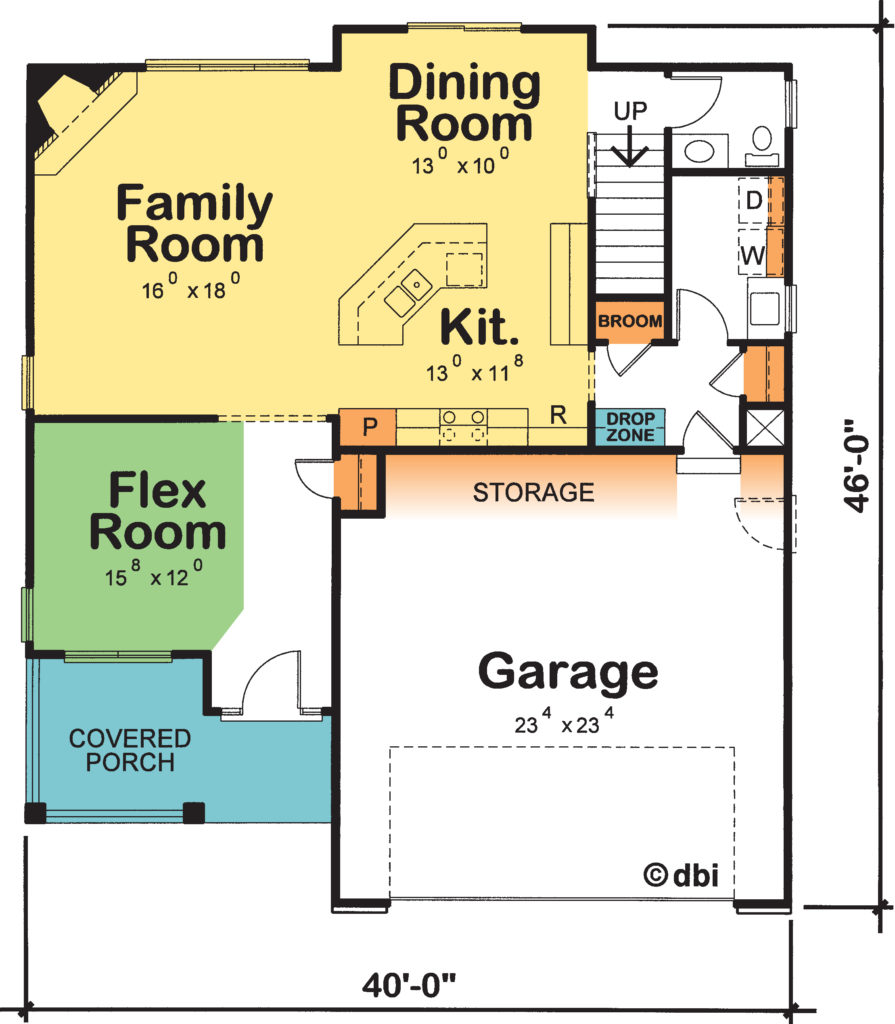
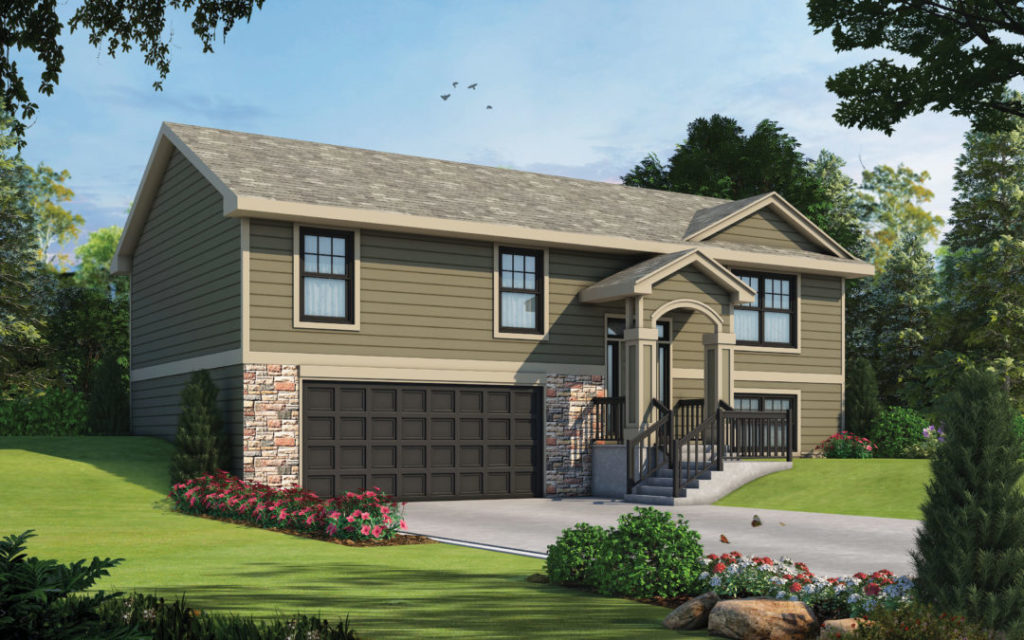
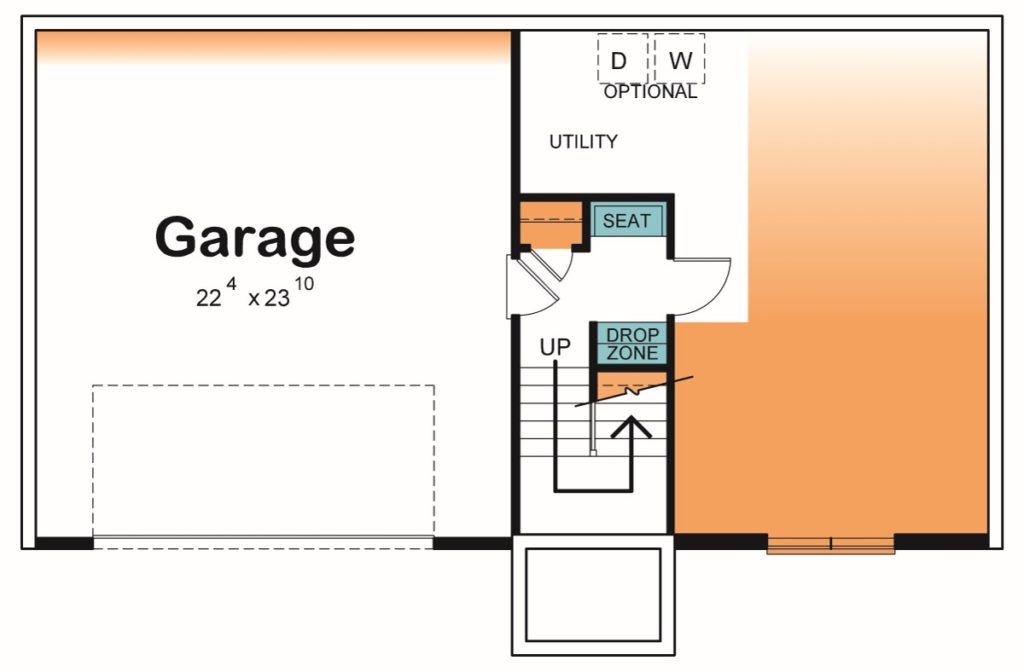
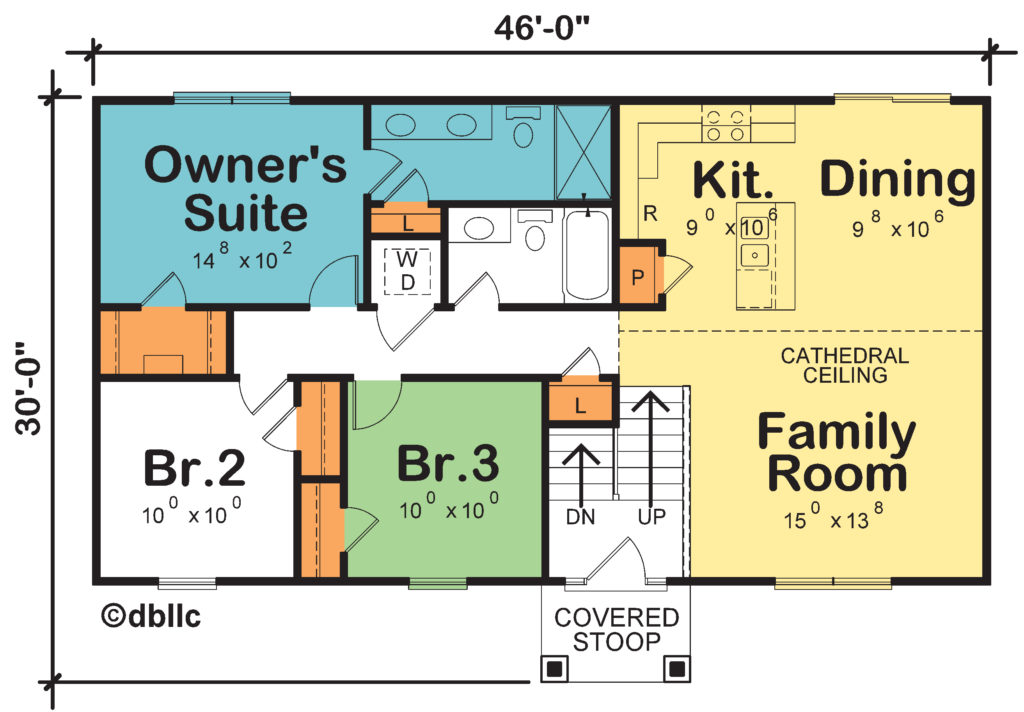
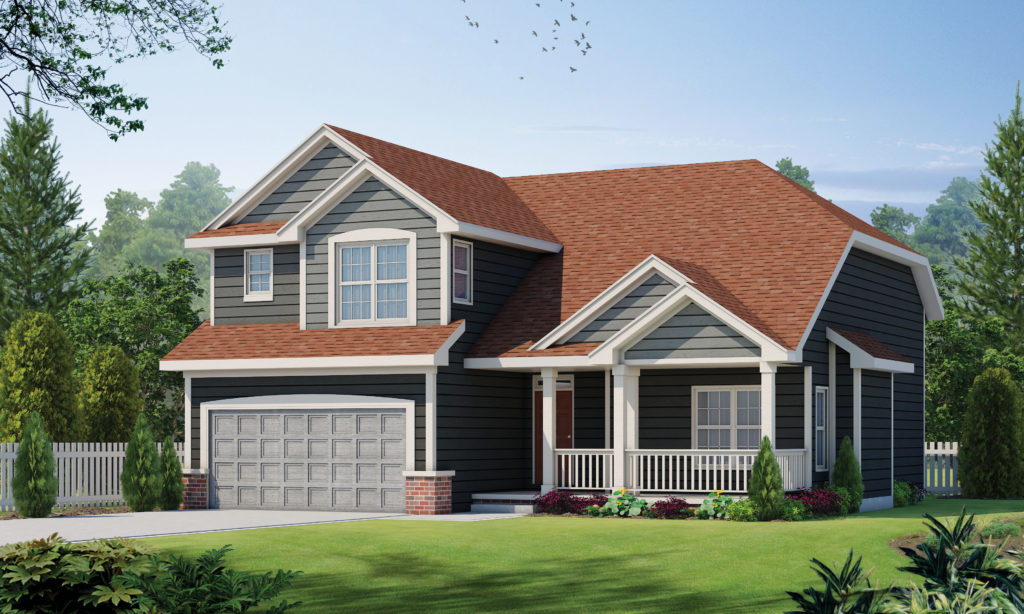
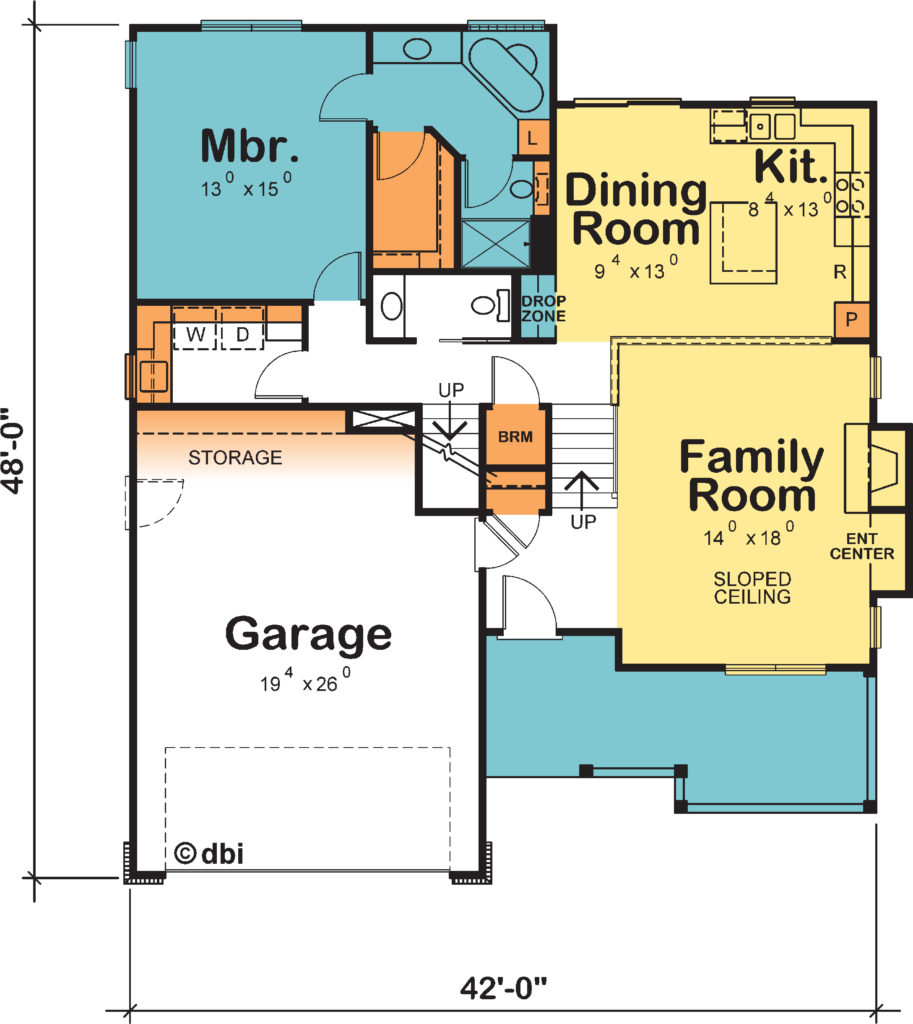
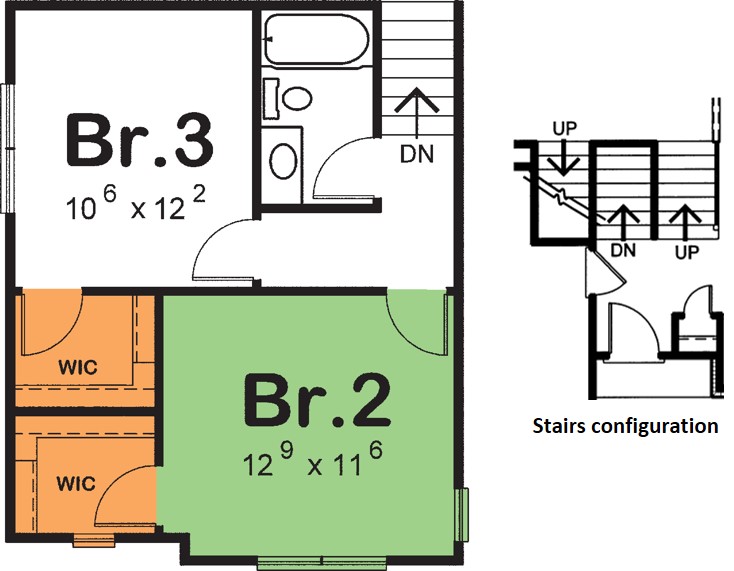
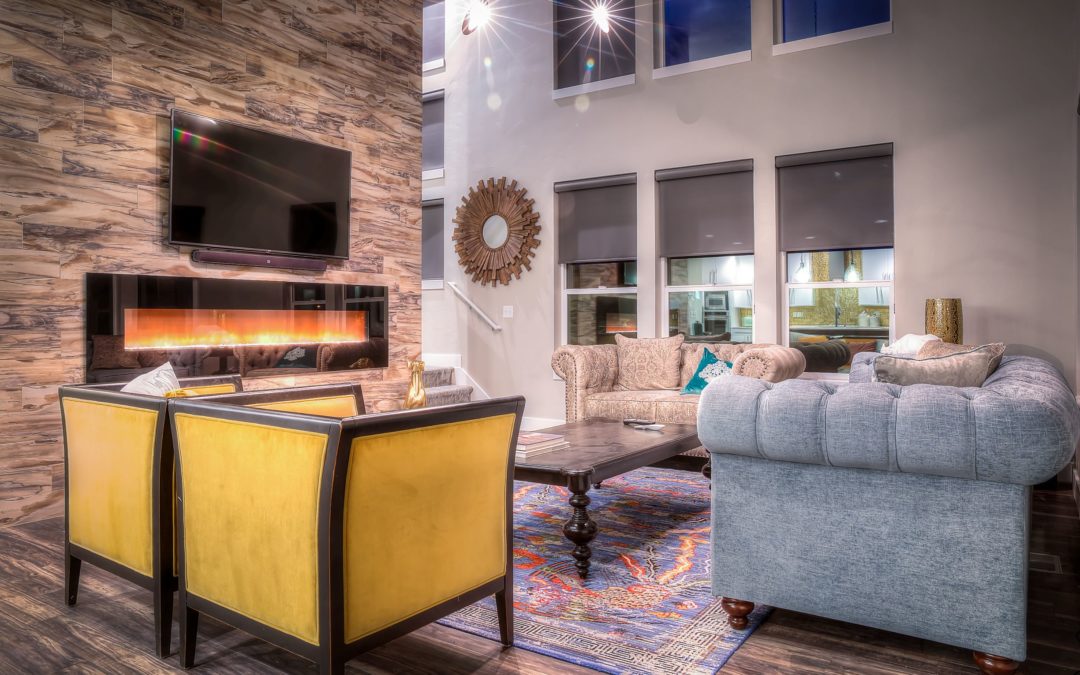
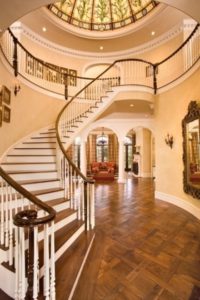 Staircase design, construction, and materials run the gamut of pricing. One guideline often used relates to the staircase’s public visibility – the more prominent the staircase placement, the more attention it usually gets. In some homes, the staircase is a signature design element; in others it is primarily functional. Simple and straight is the least costly staircase design, but that layout doesn’t work for some home designs. U-shaped staircases and L-shaped staircases with a 90-degree turn are also common but require a landing, which adds some cost. Flared and curving staircases can be stunning but are expensive.
Staircase design, construction, and materials run the gamut of pricing. One guideline often used relates to the staircase’s public visibility – the more prominent the staircase placement, the more attention it usually gets. In some homes, the staircase is a signature design element; in others it is primarily functional. Simple and straight is the least costly staircase design, but that layout doesn’t work for some home designs. U-shaped staircases and L-shaped staircases with a 90-degree turn are also common but require a landing, which adds some cost. Flared and curving staircases can be stunning but are expensive.